Summit Avenue can be both beautiful and safe!
The City of St. Paul plans to rebuild Summit Avenue in the coming years and make the bike lanes into safer, more enjoyable, off-street trails.
Voice your support for safer walking, biking and driving options on Summit. Help make this vital corridor accessible to ALL.
5 key take-aways from the Summit Avenue Regional Trail plan
The plan was overwhelmingly approved by the City Council and the Metropolitan Council in 2023 but there will be additional public meetings and decisions about many details. These include exact trail layouts and widths for different sections, and possible closures of 3 cross streets at Prior Avenue, Finn Street, and the driveway across from the St Paul Seminary. So you can still give input and voice your support. Get in touch with your city councilperson.
Cost: Summit will be rebuilt anyway from the ground up to fix its hundred-year-old infrastructure, including the roadbed and our sewer and water lines, so implementing this plan doesn’t add meaningful additional expense or inconvenience.
Safety: Separated, protected bike paths and more prominent intersections are the modern standard for safety on a street like Summit. They’ll make Summit safer for all of us whether we’re walking, biking or driving. The plan proposes one-way bike paths going in each direction on Summit. They’d be placed at the same height as the sidewalk and would include raised crosswalks at many intersections.
Trees: Along most of Summit, the street won’t be widened. In most areas the curbs will be moved inwards, away from trees. In two sections, a curb may be moved outwards, up to 18 inches (but this hasn’t been decided yet). The plan believes the bike trail could pose an increase risk to 89 of Summit’s 1,561 trees but isn’t planning to cut any of them down. The City will also plant even more trees on Summit as part of the plan. (See plan pages 119-121).
Parking: West of Lexington, parking won’t be affected; East of Lexington, parking will be reduced to one lane. Today, only ~30% of parking is used on Summit. (See plan pages 94,95 and 118)
You can read the entire approved plan or a summary version.
FAQs
-
St. Paul is planning to rebuild Summit Avenue to replace its aging sewers, water lines, curbs and roadbeds. So the City put together a vision document — the Summit Avenue Regional Trail plan — for what an updated version of Summit could look like.
The rebuild was a good time to evaluate whether Summit should stay exactly the same or if anything should be updated.
The existing on-street bike lanes were added in the 1990s. We now know that elevated, separated bike lanes with raised crosswalks are safer and they’ve become the industry standard. So a street rebuild is a great chance to update the street to reflect that and ensure more people feel safe biking and walking Summit.
In order to make the bike lanes into trails, the proposed plan will move the curbs inwards, narrowing Summit, and put the bike lanes outside the parked cars, up on the newly re-positioned curbs. This will have the added benefit of shortening crossing distances for pedestrians, making it safer to cross Summit.
-
St. Paul is planning to rebuild Summit anyway because critical infrastructure like the water and sewer lines are 50-100 years old and need to be rebuilt. So it was good time to evaluate whether Summit should stay exactly the same or if it should be updated.
-
The proposed plan is to convert the existing bike lanes into one-way, elevated bike trails going in both directions on Summit, as well as safer pedestrian crossings at intersections.
West of Lexington, the elevated path will just replace the existing bike lane space
East of Lexington, the elevated path will replace the bike lane space and one lane of parking.
-
Nope! The whole street has to be rebuilt anyway to update critical infrastructure like the water and sewer lines. The cost will be the same whether it’s rebuilt exactly the same or with updates like safer elevated bike lanes.
-
No! An explicit goal of the City’s plan is that the new design “limits impacts to greenspace and trees.” Preserving the incredible tree canopy on Summit is critically important. The beautiful trees are of course a big part of why it’s so wonderful to spend time on Summit!
Trees will not be cut down as part of the plan, but some trees’ root zones may be affected
Along most of Summit, the curb line won’t change or will actually be moved inwards, away from trees. So trees won’t be disproportionately affected by adding elevated bike lanes
In two sections of Summit (west of Fairview and between Lexington and Snelling) the curb may move out up to 18 inches. This and intersection areas may affect the root zones of an incremental 89 trees (Summit has a total of 1,561 trees). But this doesn’t mean the trees will be cut down. Arborists will work to ensure the trees survive construction.
-
The fact is, even without making any changes to Summit, 8% of the avenue’s 1,561 trees are considered “at risk.” With the proposed changes, this number increases to 14% (that is, an incremental 89 trees are deemed at risk).
But being at risk doesn’t mean the tree will be cut down – in fact it means the tree will get special attention from arborists to evaluate what can be done to keep it growing healthy and strong.
-
West of Lexington, parking will stay essentially the same.
East of Lexington, one lane of parking will be removed. The proposal is for parking to alternate sides of the street over the course of the avenue but this will be subject to more meetings and public feedback.
-
You can download and read a PDF of the entire approved Summit Avenue Regional Trail plan on the Parks and Recreation website, or you can read an executive summary.
-
Write to your city councilperson and tell them you’d like to have safer walking and biking options on Summit.
Attend future detailed planning meetings as final designs for specific sections are presented for public feedback.
Reach out to us to find out about more ways you can show support — like getting a yard sign!

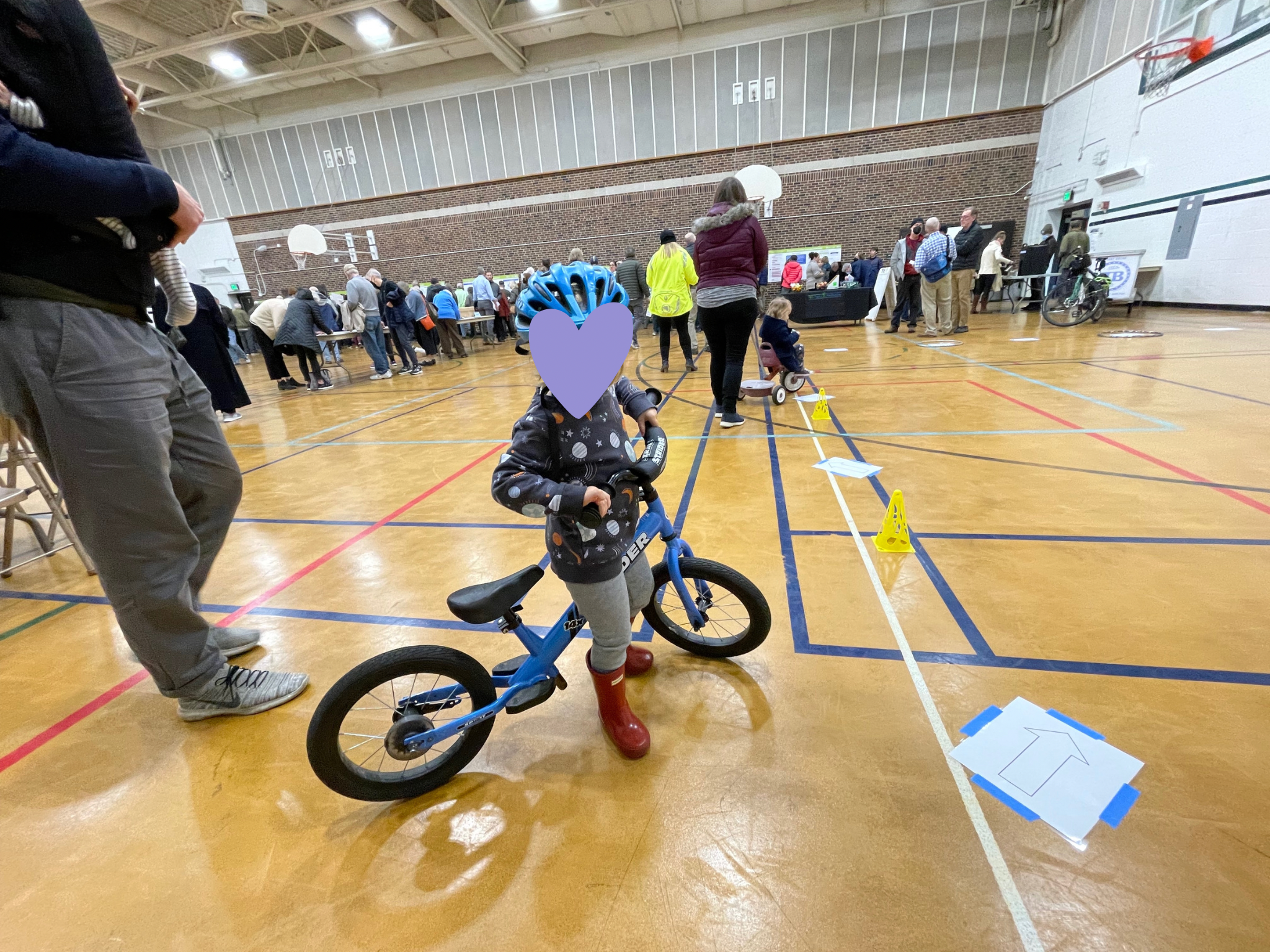
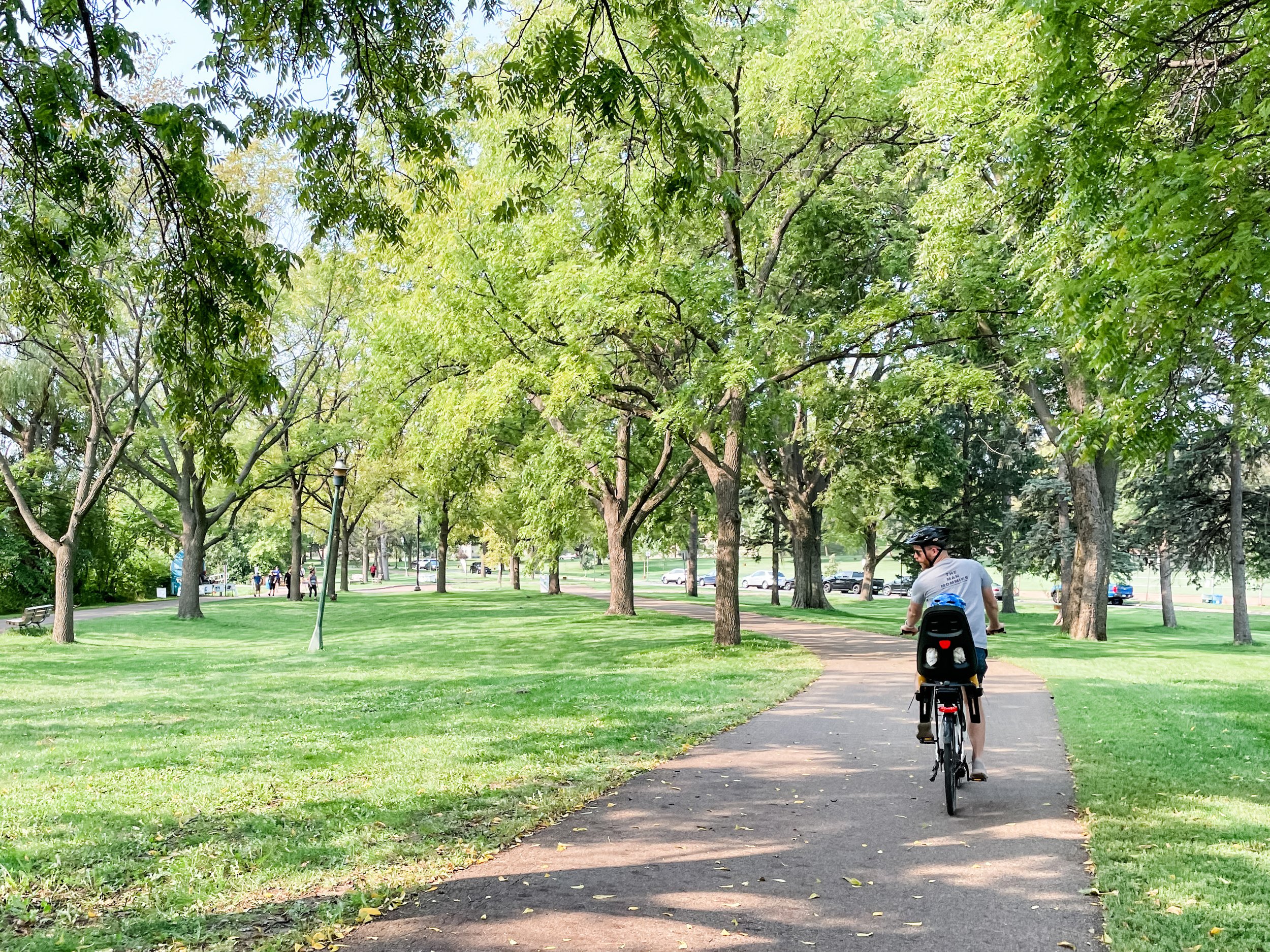



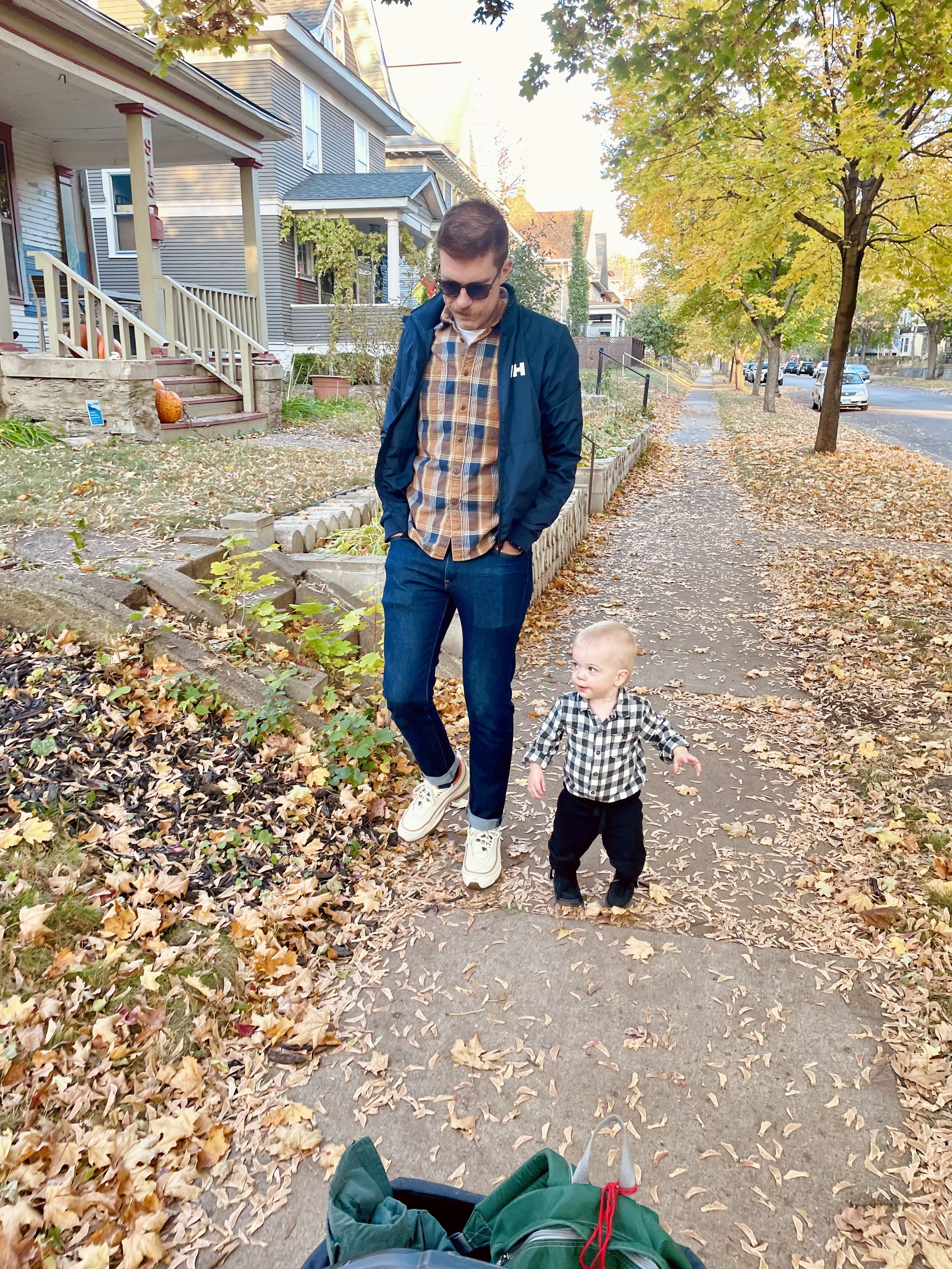

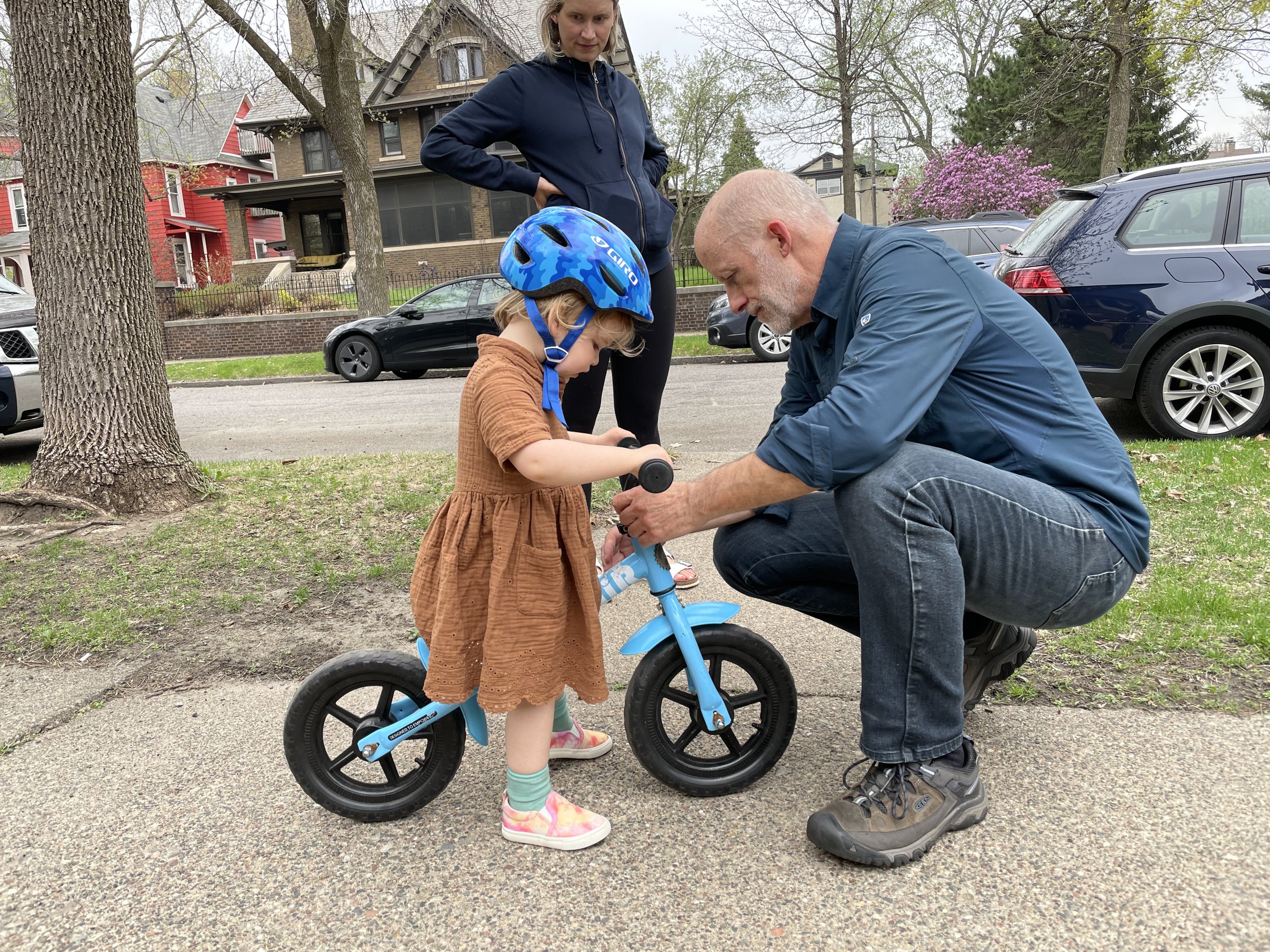
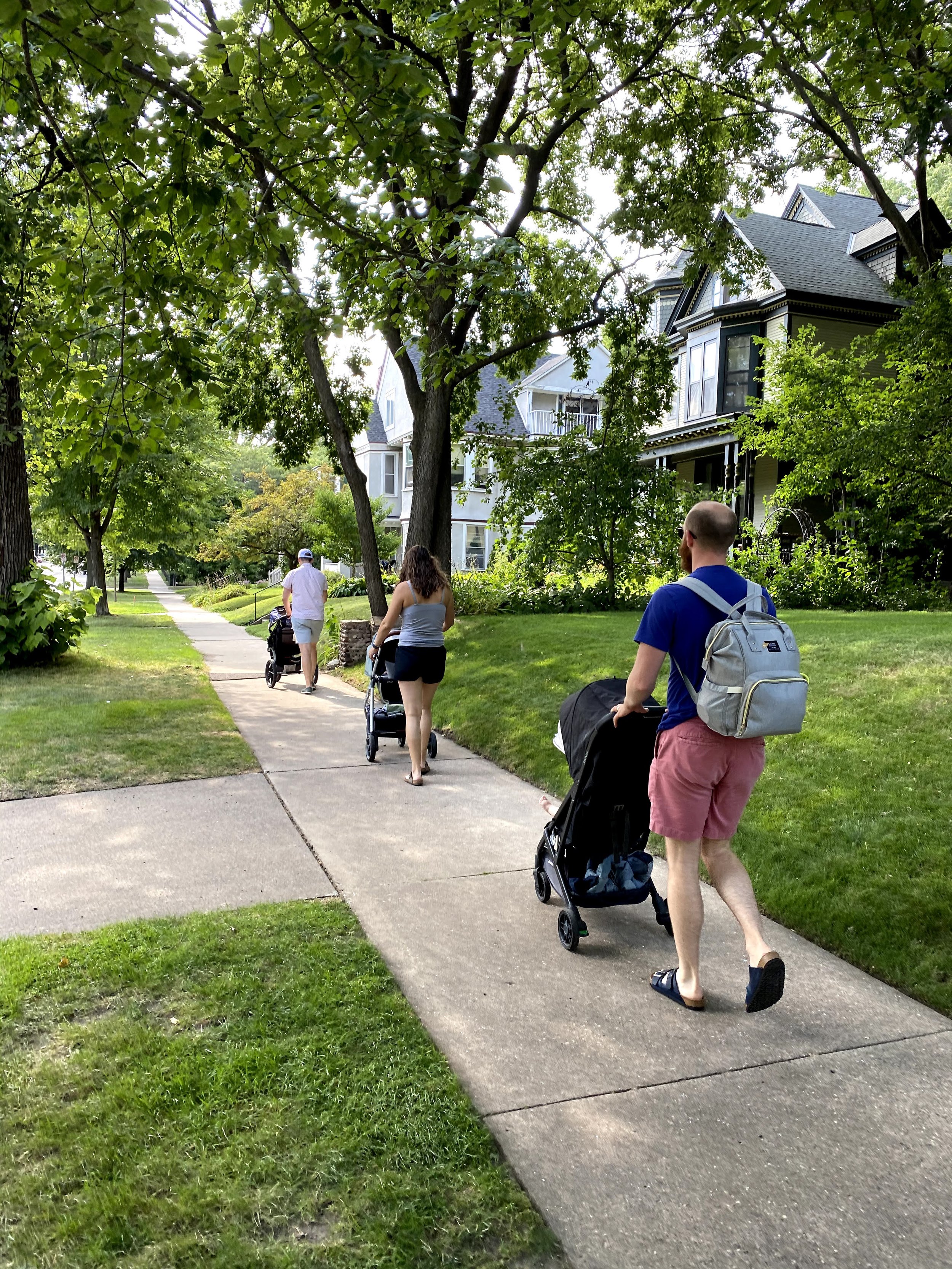
Safer Summit was brought to you by your friendly neighborhood biker gang! Read more of the backstory of how we started the Safer Summit project here.
